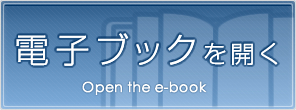For the Safety Navigation In Japanese Coastal Waters page 102/120
このページは For the Safety Navigation In Japanese Coastal Waters の電子ブックに掲載されている102ページの概要です。
秒後に電子ブックの対象ページへ移動します。
「電子ブックを開く」をクリックすると今すぐ対象ページへ移動します。
概要:
- 98 -Chapter 3 Verifying Operating Conditions and Performance of the MainEngine and Essential Auxiliaries of the Ship throughStarting/Stopping and Go ahead/Go astern Trials and Tests beforeEntering H....
- 98 -Chapter 3 Verifying Operating Conditions and Performance of the MainEngine and Essential Auxiliaries of the Ship throughStarting/Stopping and Go ahead/Go astern Trials and Tests beforeEntering Heavily Congested Sea AreasIt has been recently reported that the percent share of machinery failure of the total number ofships requiring rescueis 25%, and 22% of this category occurred in sea areas featured by heavytraffic congestion.Machinery failures in such congested waters can cause secondary accidents such as groundingand collision with other ships.To prevent machinery failures, the following points must be observed:1. Before entering heavily congested sea areas, stating/stopping and go ahead/go astern trials of themain engine, operating condition checks on remote manoevring systems, variousauxiliarities andsteering gears, and if possible, mooring trials must be carried out to confirm that machineryoperates properly.2. Fuel oil should be transferred outside heavily congested sea areas.3. Before departure, thorough checks on remote manoeuvring systems and other machinery,including the steering gears should be done, and if possible, sufficient mooring trials should becarried out, whereby the propre operating conditions of machinery should be verified.When unmooring with tug assistance, checks should be made on the performance of the mainengine at a suitable water area before tugs are dismissed.4. If there is a crew transfer, the operating procedures for a variety of machinery and equipment andrecords of adjustments must be carried over from the persons leaving to the persons arriving.5. If the ship becomes not under command due to a machinery failure, take all necessary stepsimmediately for safety of your own ship, and at the same time, notify that the ship is in a state ofnot under command to other ships in the vicinity through international VHF radiotelephone,lights, shapes and all available means of communication, to prevent collisions.6. Not only on the event of falling into a state of not under command, but when a ship hasmachinery trouble affecting its safe navigation, immediately notify the nearest Regional MaritimeSafety Office or Station reporting the place of occurrence, outline of machinery trouble andemergency steps taken, etc..

